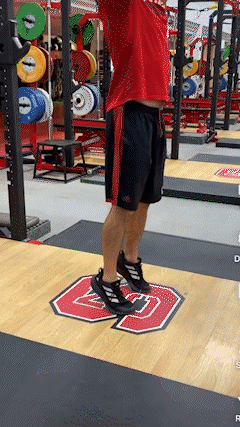
I was at a local Basketball match recently and was surprised to see that the warm up had changed a lot and not for the better.
I saw both teams do their “sport” warm up and this didn’t change much over the years. Players finding their touch and range with a ball, progressed on to higher intensity elements such as passing drills, layup lanes, 2-on-1s and 3-on-2s with great progressive intensity. Eventually, in this segment of the warm up, guys were accelerating at full tilt, hitting high speeds with intention, pumping the brakes & reaccelerating; guys jamming it and grabbing great boards, backdoor cuts, etc.
Then, almost to my disbelief, they began a “warm up”; which from a physiological standpoint was putting the players to sleep as it was long in duration and not fit for purpose.
We saw slow jogging, high kicks, static stretching series, standing lateral kicks (banded glute activation) exercises, snap downs, choreographed “agility” (pre-planned change of direction) drills, 2 step “acceleration” with an exaggerated single-step brake.

The idea of the warm up is to prepare for the work to come, both teams did a decent job with their sport warm up but when it came to the “actual” warm up the entire protocol was not only inadequate but counterproductive. I was baffled as these athletes essentially cooled down.
Muscle temperature can affect nerve impulse travel time and speed of muscle contraction (1).
Slow static stretching before high-intensity exercise such as accelerating/sprinting, jumping and agility manoeuvres may increase the chances of injury (2). Research has shown that slow static stretches reduce power and sprint performances (3).

The RAMP (Raise, Activate, Mobilise, Prepare) protocol is something we heavily lean on within the exercise science industry, but I think it has lost some context and S&C coaches are more concerned about fitting content into this model instead of looking at the context of use; not seeing the wood from the trees.
Afterall, you would have a different warm up for your strength session compared to a speed session (I hope).
A pre-game/pre-match warm up should be well structured, planned, orientated around the game’s intensity and specific demands.
If you or your team want to have an effective warm up to improve performance – get in touch.
.
References
- Hedrick, Allen. EXERCISE PHYSIOLOGY: Physiological Responses to Warm-Up. National Strength and Conditioning Association Journal 14(5):p 25-27, October 1992.
- Shrier I. Stretching before exercise does not reduce the risk of local muscle injury: a critical review of the clinical and basic science literature. Clin J Sport Med. 1999 Oct;9(4):221-7. doi: 10.1097/00042752-199910000-00007. PMID: 10593217.
- Pornratshanee Weerapong, Patria A. Hume & Gregory S. Kolt(2004) Stretching: Mechanisms and Benefits for Sport Performance and Injury Prevention, Physical Therapy Reviews, 9:4, 189-206, DOI: 1179/108331904225007078
